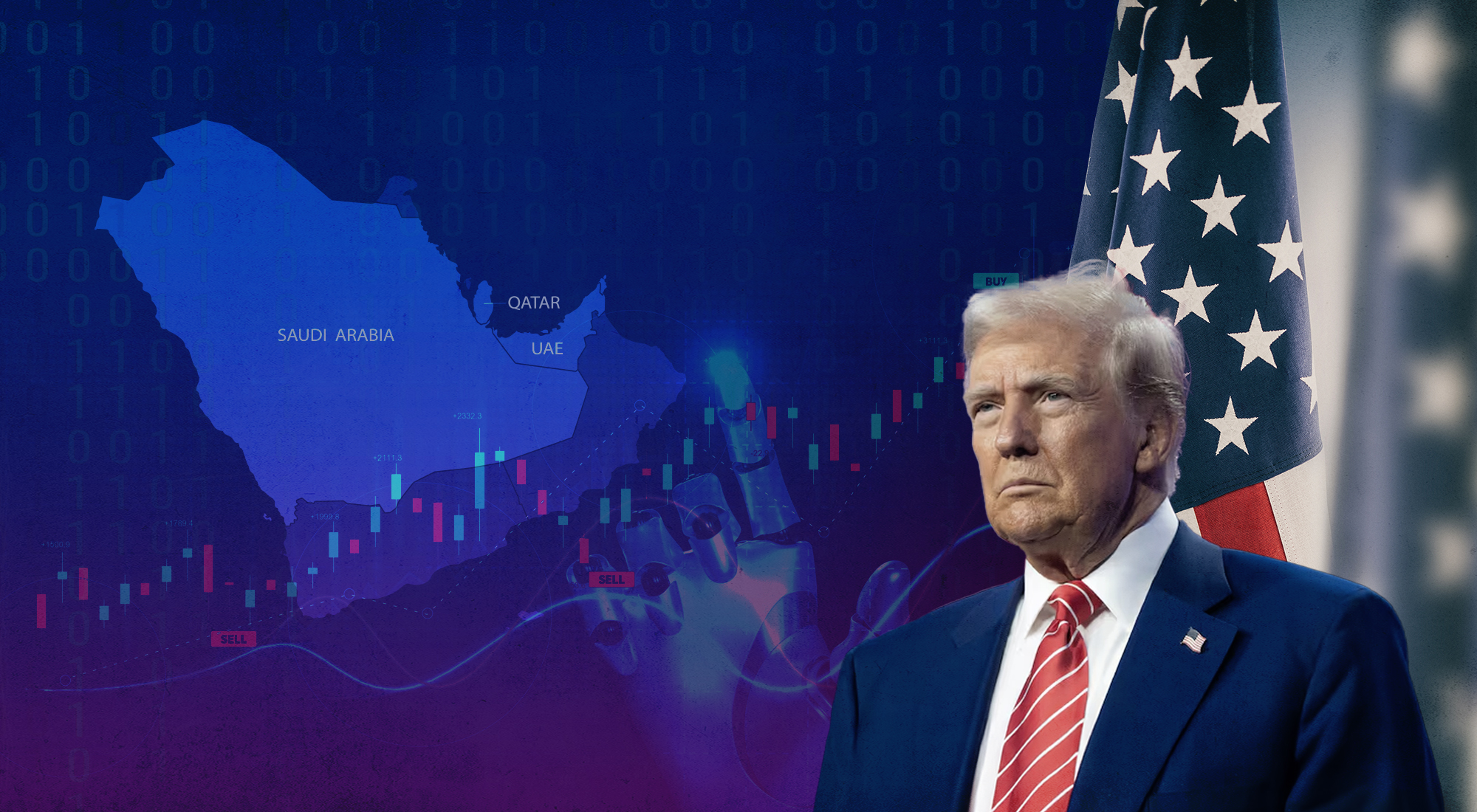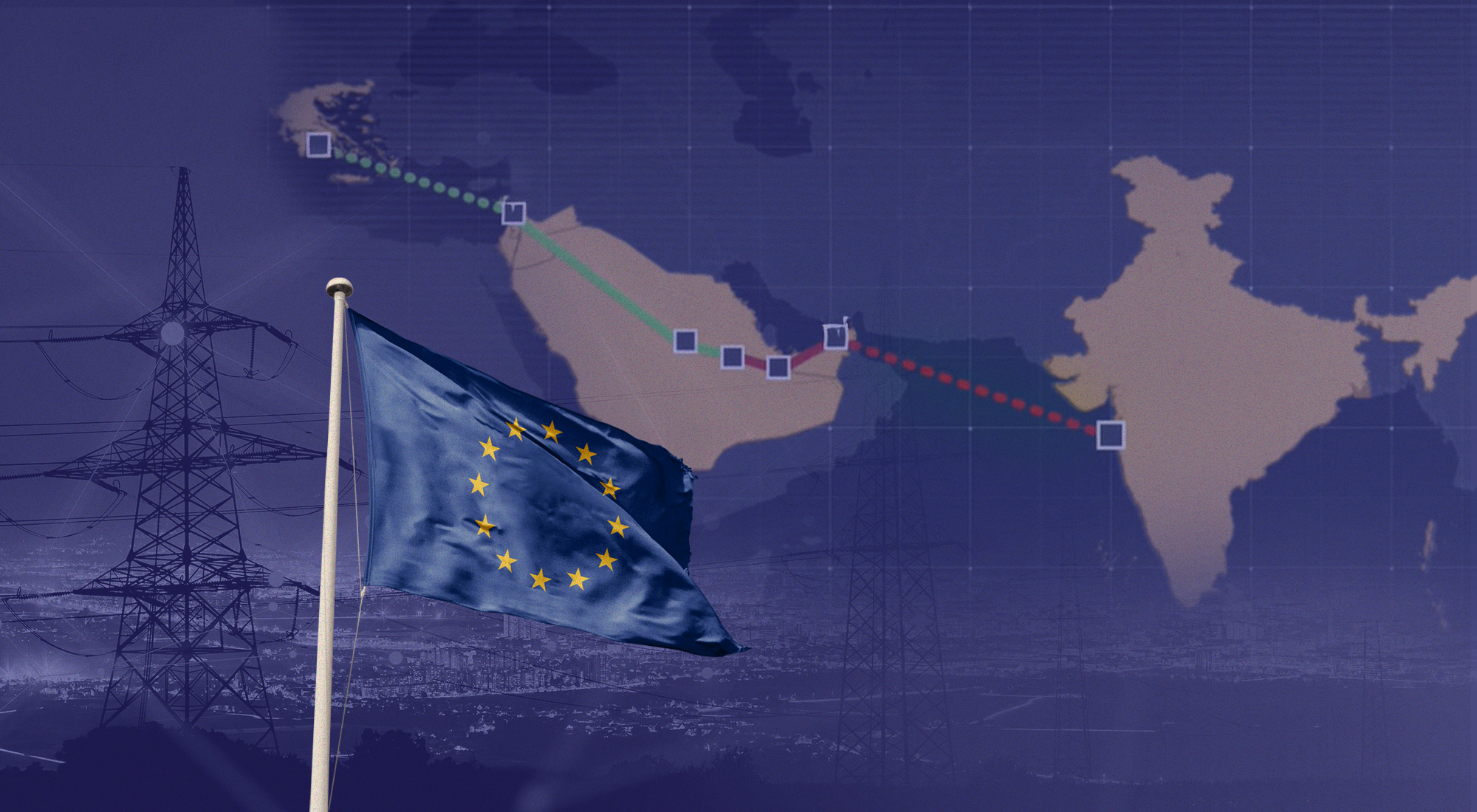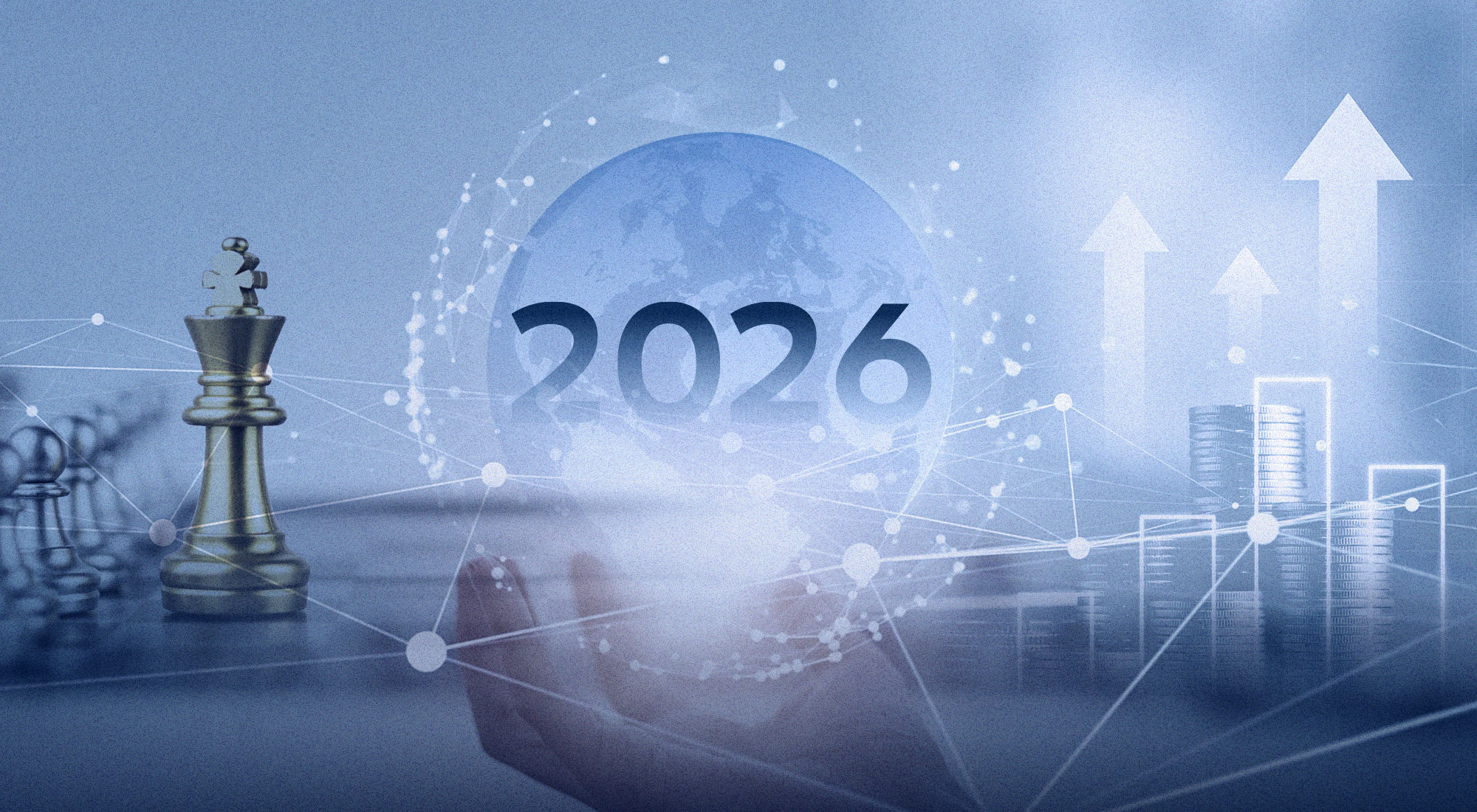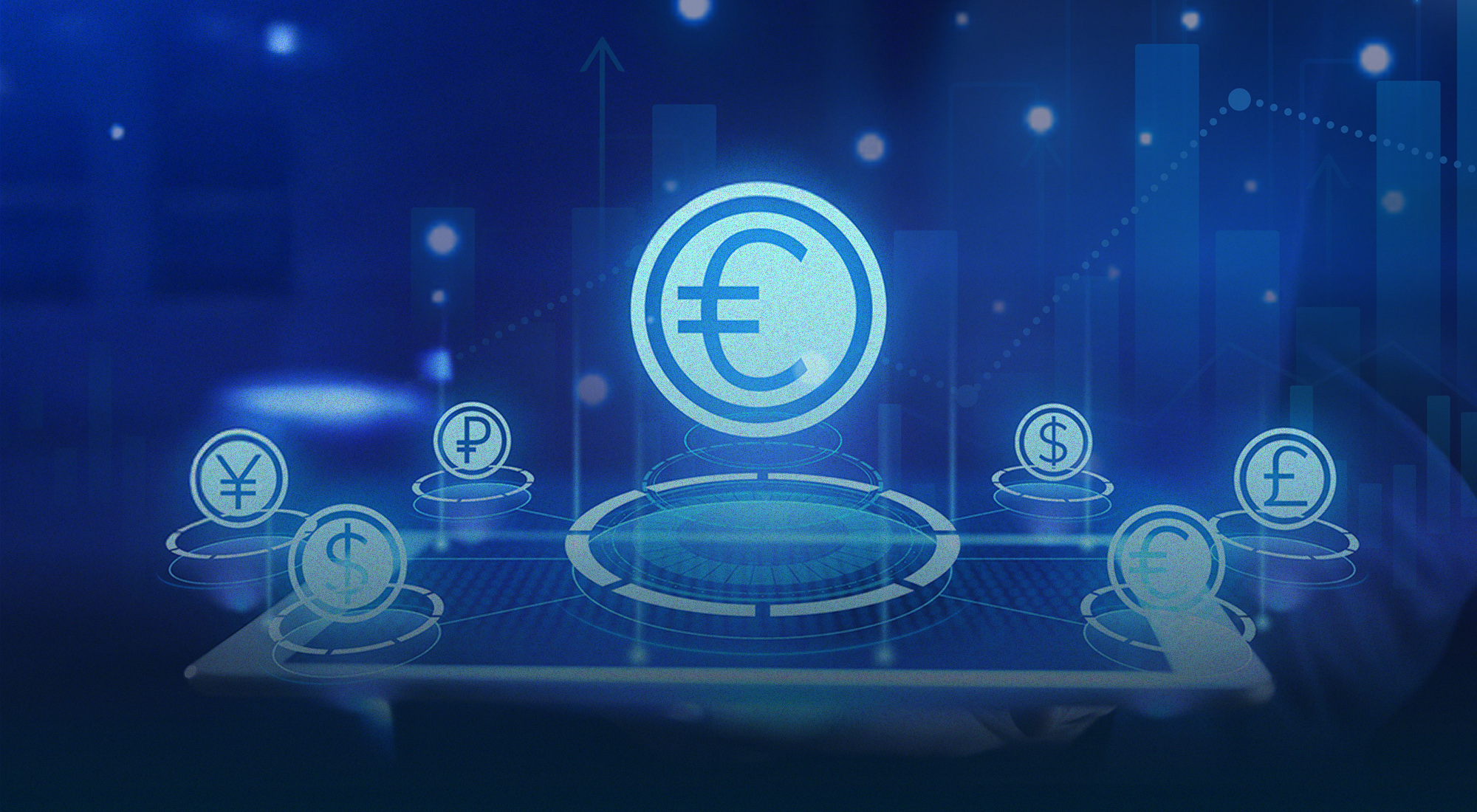Within five months of returning to office, U.S. President Donald Trump has pursued his foreign policy agenda with greater intensity and visibility than during the early months of his first term. His second-term strategy places renewed emphasis on foreign investments as a cornerstone of international engagement. On May 13, 2025, Trump arrived in Riyadh, Saudi Arabia, to begin his three-day tour of the Gulf, his first official overseas trip since returning to the White House. The itinerary included stops in Saudi Arabia, Qatar, and the United Arab Emirates (UAE), straying from the traditional precedent of beginning foreign visits in Canada or Western Europe. The trip signaled a reorientation of U.S. diplomacy toward investment-led partnerships and technological cooperation, rather than maintaining traditional alliances.
The 2025 Gulf tour itinerary mirrors President Trump’s first-term visit, signaling a return to the three energy-rich Gulf Arab states that have long aligned with U.S. economic and security objectives. However, the region Trump re-enters in 2025 is markedly different from the one he visited in 2017. Since then, Gulf governments have diversified their foreign partnerships, strengthened ties with emerging powers, and increasingly embraced multilateralism as a hedge against great-power volatility. However, unlike his 2017 itinerary, this tour did not include a stop in Israel. When asked about the possibility, Trump stated: “We will be doing it at some point. But not for this trip.”[1]
Even so, these Gulf states now serve as central pillars in Trump’s efforts to attract large-scale foreign investments in American manufacturing, production, innovation, and job creation. The tour reflects a second-term strategy that re-centers U.S. foreign policy on bilateral economic partnerships and strategic defense ties, positioning foreign investment not only as a tool for domestic revitalization but also as new opportunities for the Gulf states.
Strategic Overview of the 2025 Gulf Tour
May 13 – Saudi Arabia: Transactional Diplomacy and Defense Realignment
The three-day tour commenced in Riyadh, where the Saudi-U.S. Investment Forum served as the anchor for the visit, showcasing a high-profile convergence of transactional diplomacy and economic spectacle. At the forum, President Trump announced a US$600 billion investment commitment from Saudi Arabia aimed at strengthening U.S. energy security, the defense industry, access to global infrastructure, technology leadership, and securing access to critical minerals.[2]
While the forum primarily focused on economic cooperation, Trump also used the platform to address one of the region’s most pressing security concerns: Iran’s nuclear program. Pivoting from business to geopolitics, he opened the door to negotiating a deal to curb Tehran’s proxy influence and halt its nuclear ambitions, stating: “If I can make a deal with Iran, I’ll be very happy, if we’re going to make your region and the world a safer place.”[3] At the same time, he warned that Tehran would need to act quickly, indicating that renewed economic pressure and military action are waiting for them, adding: “The time is right now for them to choose… Right now, we don’t have a lot of time to wait.”[4]
1. Landmark U.S.-Saudi Defense Agreement
The culmination of the Riyadh engagements was marked by the announcement of what the administration described as “the largest defense sales agreement in history,” valued at nearly US$142 billion.[5] While the White House did not release public details of the agreement, it has stated that the sales fall into five broad categories: air force advancement and space capabilities, air and missile defense, maritime and coastal security, border security and land forces modernization, and information and communication systems upgrades.[6] In addition to the hardware, the deal includes extensive training and logistical support, designed to enhance the long-term capacity of the Saudi armed forces, which encompasses improvements to the Saudi service academies and the development of military medical services, built on American systems and training.
In parallel with the defense agreement, the forum made clear that the future of the U.S.-Saudi partnership is not confined to only defense, as evidenced by the delegation of business executives accompanying the president, who signed their own deals at the conference. The pledge in artificial intelligence (AI) development was made clear during the summit, with Saudi Arabia’s sovereign wealth-backed AI venture, Humain, announcing plans to partner with Nvidia to build large-scale AI factories powered by hundreds of thousands of high-performance GPUs over the next five years.[7] Additionally, Humain announced a US$5 billion partnership with Amazon and a US$10 billion collaboration with AMD. As part of its US$600 billion investment in the U.S., the Saudi technology firm, DataVolt, outlined plans to invest US$20 billion in American data centers. DataVolt also committed, alongside Google, Oracle, AMD, Salesforce, and Uber, to a combined US$80 billion in tech investments in the U.S. and the Kingdom.[8] These initiatives reflect a broader trend among Gulf states to reposition themselves as hubs for technology and innovation, aligning their economic visions with long-term digital transformation goals.
2. Reopening the Syrian File
Beyond economic diplomacy, the Riyadh visit also served as a platform for recalibrating U.S. regional engagement. Closing his remarks at the investment forum, President Trump made a dramatic pivot by announcing plans to lift U.S. sanctions on Syria, a move he framed as a historic opportunity to “give them a chance to rebuild” after years of devastation. The Syria announcement was the clearest indication that this trillion-dollar tour is not solely about commercial wins, but also about repositioning the U.S. within the region through geopolitical gains.
Following his unanticipated declaration on Syria, Trump held a behind-the-scenes meeting with interim President Ahmed al-Sharaa on May 14, using the private dialogue to encourage him to join the Abraham Accords and take steps toward normalizing relations with Israel—a significant diplomatic overture before departing for Qatar. However, the path toward normalization remains uncertain. Given Syria’s long-standing enmity and its domestic political constraints, a formal entry into the Abraham Accords appears unlikely in the near term.
President Trump also expressed eagerness and hope about seeing Saudi Arabia join the Abraham Accords to establish relations with Israel. However, he acknowledged that Saudi Arabia would join the agreement whenever the Kingdom sees fit, stating: “I really think it’s going to be something special, but you’ll do it in your own time.”[9]
Moreover, while the suspension or lifting of certain sanctions can be executed through executive authority, many remain codified in U.S. law and would require congressional approval. Most sanctions laws passed by Congress, including a 2019 package of stringent sanctions on Syria, contain a provision that allows a sitting president to suspend sanctions if deemed necessary for U.S. national security interests.[10]
As of now, the administration has not provided details regarding which sanctions it intends to lift, raising further questions about the scope and timeline for implementing the proposed shift. Nonetheless, the announcement has been met with broad international approval, including bipartisan support from lawmakers in the U.S. Senator Jeanne Shaheen, the top Democrat on the Senate Foreign Relations Committee, noted that “it’s important for us to provide the opportunity to keep those countries moving in a way that continues to keep out Iran and Russia,” referring to both Syria and Lebanon.
Similarly, Senator Lindsey Graham, a senior Republican voice on foreign policy, also expressed tentative support, stating that the new Syrian government “may be a good investment and could be the pathway to unifying Syria, making it a stable part of the region,” while cautioning that “there is a lot that must be learned before making that determination.”[11]
May 14 – Qatar: Aerospace Trade and Quantum Cooperation
Continuing his trillion-dollar tour, President Trump arrived in Doha, marking a historic first as the inaugural official visit to Qatar by a sitting U.S. president. The visit opened with the signing of an economic agreement valued at US$1.2 trillion, reinforcing the commercial intent of the trip.[12]
Central to the visit was a US$96 billion agreement between Qatar Airways and Boeing for the purchase of up to 210 widebody aircraft, including the 787 Dreamliner and 777X, powered by GE Aerospace engines. According to the White House, the agreement is expected to support 154,000 U.S. jobs annually, totaling over one million jobs in the U.S. during the production and delivery of the deal.[13]
In addition to the aerospace deal, the visit aligned with the broader trend of tech-focused investments across the Gulf. The visit to Qatar included significant developments in advanced computing and digital infrastructure. One of the more prominent announcements was a US$1 billion joint venture between the U.S.-based quantum computing firm Quantinuum and Qatar’s Al Rabban Capital, aimed at accelerating development in quantum technologies, which underpin future advances in secure communications, cryptography, and high-speed computing. The partnership also includes building a specialized workforce in both countries, positioning Qatar as an early partner in the U.S.’ broader effort to secure leadership in next-generation computing.[14]
This partnership marked Qatar’s emergence as a foundational node in the U.S. strategy to lead in next-generation technologies through targeted bilateral alliances.
May 15 – United Arab Emirates: AI Infrastructure and Bilateral Tech Convergence
The final stop on the 2025 Gulf tour was in Abu Dhabi, where the emphasis shifted toward AI, industrial cooperation, and long-term strategic investments. At Qasr al Watan, President Trump unveiled the first phase of a planned 5-gigawatt AI campus—a project poised to become the largest AI infrastructure initiative outside the U.S.—highlighting the strategic tech ambitions underpinning his Middle East tour.[15]
The facility, constructed by Abu Dhabi’s G42 and operated in partnership with U.S. hyperscalers and cloud service programs, will span ten square miles and is designed to serve as a regional platform for advancing computing. Its location provides latency-friendly access to nearly half of the regional population within 3,200 kilometers of the UAE, powered by a combination of low-emission energy sources, including nuclear, solar, and natural gas.[16]
The project also marked the launch of the U.S.-UAE Acceleration Partnership, a bilateral framework to expand cooperation on AI, cloud infrastructure, and semiconductors.[17] The agreement permits American firms to operate the data centers and includes a UAE commitment to support equivalent infrastructure in the U.S. It also outlines regulatory alignment with U.S. security standards to safeguard advanced technologies.[18]
The visit also brought over US$200 billion in new commercial agreements, including a US$14.5 billion order from Etihad Airways for 28 Boeing 787 and 777X aircraft with GE Aerospace engines. These announcements formed part of a broader ten-year investment plan announced in March 2025, in which the UAE stated it would invest US$1.4 trillion in artificial intelligence, semiconductors, energy, and manufacturing.[19] Trump described the commitment as a sign of growing partnership, saying: “I have absolutely no doubt that the relationship will only get bigger and better.”[20]
From Security Patronage to Technological Partnership
Departing from Abu Dhabi, the 2025 Gulf tour offered more than a sequence of bilateral agreements and high-profile summits; it also functioned as a demonstration of the new U.S. administration’s commitment and engagement with the region. The visits to Saudi Arabia, Qatar, and the UAE point to a foreign policy no longer defined by the isolationist posture associated with Trump’s first term. The Gulf tour boded positive results from President Trump’s perspective, who declared that the Middle East is entering a “golden age” alongside American prosperity.[21]
Though varying in scope and scale, the deals across Saudi Arabia, Qatar, and the UAE cohere into a shared vision of digital modernization and regional tech leadership. Each of the three Gulf nations presented national visions centered around AI, digital infrastructure, and advanced computing. The agreements signed throughout the tour reflected not only large-scale investment but also a coordinated ambition to position the Gulf as a global hub for emerging technologies. From AI data centers and quantum research ventures in Doha to commitments in semiconductor development and cloud services by Abu Dhabi, the region is increasingly viewed as a critical node in the future architecture of AI. For the Gulf states, this model repositions the U.S. as a technology partner and investment destination, rather than a security patron.
The transactional nature of these deals, however, does not diminish their strategic weight. On the contrary, the underlying logic of the tour suggests a recalibrated doctrine—one in which economic interdependence supplants treaty formalism, and technological integration takes precedence over legacy alliances. Each agreement formed part of a broader architecture aimed at embedding the U.S. and Gulf economies into trajectories of innovation and production. In doing so, the tour formalized a strategic realignment centered not only on security guarantees but on co-investment in future industries.
[1] Liebermann, Oren, and Jeremy Diamond. 2025. “Trump’s Middle East Trip Leaves Netanyahu Watching From the Sidelines Again.” CNN. May 12, 2025. https://edition.cnn.com/2025/05/12/middleeast/israel-trump-middle-east-intl.
[2] The White House. 2025. “Fact Sheet: President Donald J. Trump Secures Historic $600 Billion Investment Commitment in Saudi Arabia.” May 13, 2025. https://www.whitehouse.gov/fact-sheets/2025/05/fact-sheet-president-donald-j-trump-secures-historic-600-billion-investment-commitment-in-saudi-arabia/.
[3] Fassihi, Farnaz. 2025. “Iran Proposes Novel Path to Nuclear Deal With U.S.” The New York Times. May 14, 2025. https://www.nytimes.com/2025/05/13/world/middleeast/iran-us-nuclear-talks.html.
[4] Ibid.
[5] The White House. 2025. “Fact Sheet: President Donald J. Trump Secures Historic $600 Billion Investment Commitment in Saudi Arabia.” May 13, 2025. https://www.whitehouse.gov/fact-sheets/2025/05/fact-sheet-president-donald-j-trump-secures-historic-600-billion-investment-commitment-in-saudi-arabia/.
[6] Ibid.
[7] Cheslow, Daniella. 2025. “Trump’s Saudi trip turns into an AI lovefest.” POLITICO. May 13, 2025. https://www.politico.com/newsletters/digital-future-daily/2025/05/13/trump-saudi-ai-trip-00346026.
[8] Ibid.
[9] Cheslow, Daniella. 2025. “Trump’s Saudi trip turns into an AI lovefest.” POLITICO. May 13, 2025. https://www.politico.com/newsletters/digital-future-daily/2025/05/13/trump-saudi-ai-trip-00346026.
[10] Slattery, Gram, Pesha Magid, Nafisa Eltahir, and Timour Azhari. 2025. “Trump to remove US sanctions on Syria in major policy shift.” Reuters. May 14, 2025. https://www.reuters.com/world/trump-says-will-remove-us-sanctions-syria-2025-05-13/.
[11] Ibid.
[12] The White House. 2025. “Fact Sheet: President Donald J. Trump Secures Historic $1.2 Trillion Economic Commitment in Qatar.” May 14, 2025. https://www.whitehouse.gov/fact-sheets/2025/05/fact-sheet-president-donald-j-trump-secures-historic-1-2-trillion-economic-commitment-in-qatar/.
[13] Ibid.
[14] Ibid.
[15] U.S. Department of Commerce. 2025. “UAE and US Presidents Attend the Unveiling of Phase 1 of New 5GW AI Campus in Abu Dhabi.” May 15, 2025. https://www.commerce.gov/news/press-releases/2025/05/uae-and-us-presidents-attend-unveiling-phase-1-new-5gw-ai-campus-abu.
[16] Ibid.
[17] Slattery, Gram, Andrew Mills, Federico Maccioni, and Yousef Saba. 2025. “Trump Announces $200 Billion in Deals During UAE Visit, AI Agreement Signed.” Reuters. May 16, 2025. https://www.reuters.com/world/middle-east/trump-heads-uae-it-hopes-advance-ai-ambitions-2025-05-15/.
[18] Ibid.
[19] Holland, Steve, and Federico Maccioni. 2025. “UAE commits to $1.4 trillion US investment, White House says.” Reuters. March 21, 2025. https://www.reuters.com/world/after-trump-meeting-uae-commits-10-year-14-trillion-investment-framework-us-2025-03-21/.
[20] Slattery, Gram, Andrew Mills, Federico Maccioni, and Yousef Saba. 2025. “Trump Announces $200 Billion in Deals During UAE Visit, AI Agreement Signed.” Reuters. May 16, 2025. https://www.reuters.com/world/middle-east/trump-heads-uae-it-hopes-advance-ai-ambitions-2025-05-15/.
[21] Sharp, Alexandra. 2025. “Trump Champions ‘Golden Age of the Middle East’ During Saudi Arabia Visit.” Foreign Policy, May 13, 2025. https://foreignpolicy.com/2025/05/13/trump-saudi-arabia-investment-deals-speech-syria-sanctions-iran/.









